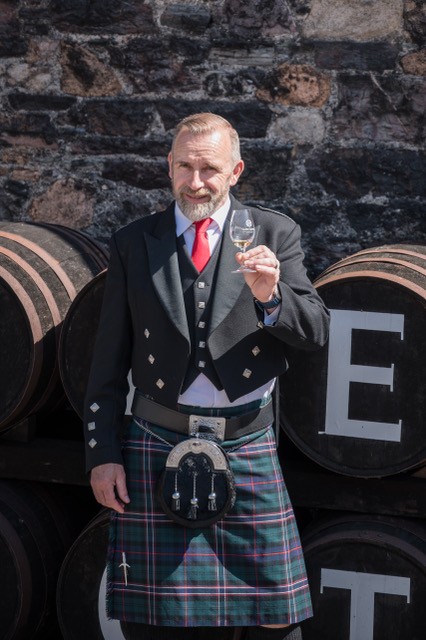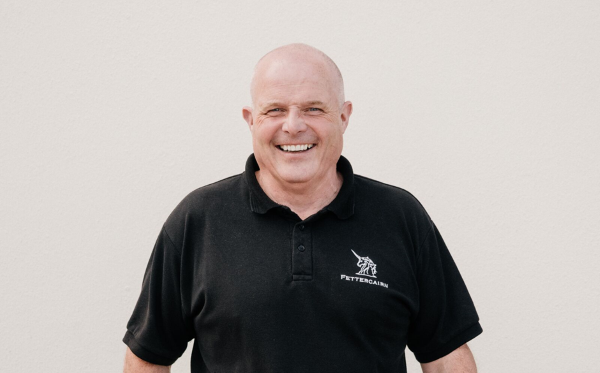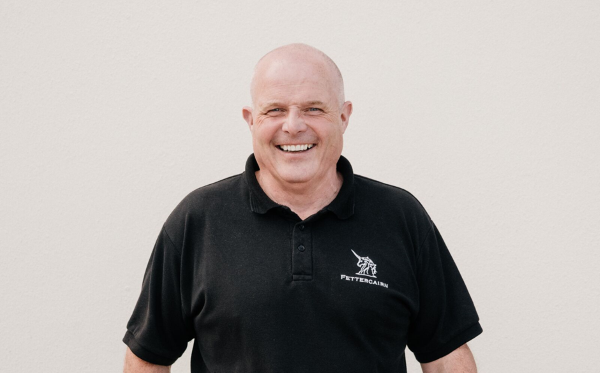Grain to Glass – Distillers
For all the sales & marketing, the endless tweaks to packaging, the ad campaigns and fight for market share, there would be no whisky without the guys that make it. Ron Emler heads to the coal face to hear from two of Scotland's leading master distillers …
Every one of Scotland's 151 distilleries is unique, each with its own identity and idiosyncrasies.
Remote locations (initially to aid concealment from the hated Excisemen) and access to local grains, peat and water all played their part in developing the art of distilling, requiring patiently acquired knowledge and techniques to produce uisge beatha.
That body of skill has been constantly refined and passed down the generations, but despite constant technological advances, the signature characteristics of each distillery remain under the influence of its master distiller. Even the best-selling global blends are the product of several distilleries, each contributing its own attributes to the final whisky.
What was once a collection of small local enterprises has evolved into a £5 billion-plus export industry increasingly under the influence of big company bean-counters demanding maximum alcoholic yields. Could that eventually herald fully automated distilleries and AI Scotch?
Two distillers producing single malts gaining increasing recognition among connoisseurs think not. They believe that human control of the variables is key to giving their whiskies their signature style and flavour.
"Maybe a guy in Japan may think that's a good idea", says Iain McAlister, distillery manager of Glen Scotia in Campbeltown, where he was born and bred, "but it wouldn't work at so many levels. The human interaction is part of the whisky story."

Stewart Walker, his counterpart at Fettercairn in the Highlands, agrees. "Human intervention through knowledge and skill is the fourth ingredient in quality Scotch whisky along with barley, water and yeast," he says. "Small tweaks in the process can make a big difference – one guy might run a still for 10 minutes longer or set a slightly different temperature. It's experience that tells us when to take the middle cut. Everyone distilling is slightly different."
Both distilleries have changed hands in the past decade. For more than 50 years, Fettercairn has been part of Whyte & Mackay, which was taken over by the Philippines-based Alliance Global Group in 2014.
Glen Scotia is part of the Loch Lomond group, which has been owned since 2019 by a global investment management firm.
But both Walker and McAlister stress that while they have corporate targets to meet their ultimate driving force is the quality of the spirit they create.
"We never sacrifice quality, but we do have certain targets," says Walker. "My job is to ensure that the quality we make is the same every day because that's the best and what people expect from Fettercairn."

Their differing locations directly influence how they obtain their spirit.
Glen Scotia's McAlister concedes that barley from East of Scotland presents fewer challenges than grain grown locally to Campbeltown. "We did a little trial run with locally grown barley last year as a first step", he says. But the bulk of his malt comes commercially from Glen Esk Maltings in Montrose in Angus.
"I know what I am going to get, the nitrogen level, the friability, the moisture. The quality is going to be consistent, a bit more uniform. You know what it's like as it comes off the lorry. You can see it, taste it. You can almost assess it before you get to the milling stage."
In Aberdeenshire Fettercairn is in a prime area for barley growing and the distillery recently set up the Fettercairn 200 Club in conjunction with its maltster, Bairds.
"Two hundred years ago all the malt we used would have been local," says Walker. "Basically, we have gone back to that. So about 200 farmers in our area contract to supply us with whatever percentage of their crop they choose. Many of their families have farmed the land for generations, so we are never going to tell them how to do it, but they are coming and telling us what problems they are having with a harvest, and we can discuss that with them. It's a cracking idea to have that conversation because it helps them to understand our problems too."
"All the farmers are within 50 miles of us. We don't want malt coming from all over, from other countries. As a group, Whyte & Mackay uses 100% Scottish cereal, which is great for sustainability."
Water is critical in the mashing and cooling processes, and the sources were crucial in the locating of distilleries.
At Fettercairn it is supplied by Scottish Water from local sources but quality and conservation are a constant concern. "We don't do anything to it but we test it regularly – although the temperatures in mashing are sufficient to see off any bugs," says Walker. "But last year we installed eight or nine water meters so now we know not only how much water we are using, but also where it's being used."
The three Campbeltown plants (Glen Scotia, Springbank and Glengyle) are all supplied direct from a designated local source, the Distillers' Main. The water is soft and acidic, helping to give the area its characteristic whiskies. "It's untreated," says McAlister. "That's important. All we do is a little bit of filtration just to take out the trees."
Both agree that meeting the challenges of climate change and reducing carbon footprints play an ever-increasing role in how they run their distilleries.
"It would be reckless not to", says McAlister. "If you don't, it's potentially commercial suicide."
Formerly, Glen Scotia used heavy oils for heating, but that has gone. "It's obvious to use the technology available," says McAlister. "So now it's gas. OK, it's still a fossil fuel, but it's an improvement with less emissions; some changes are difficult to make".
"Whyte & Mackay is one of the front-runners," says Fettercairn's Walker. "All our by-products are going into anaerobic digestion, and we are definitely looking at energy. The company recently put in a new boiler at Jura, which is a first of its kind. It runs on wood, but there's a form of hammer at the front which creates a dust which gives more efficient heat and leaves less waste."
Glen Scotia is a flagship single malt in the Loch Lomond stable, and Fettercairn is moving in that direction at Whyte & Mackay.
"It has come from literally nowhere", says Walker. The distillery is supplying less and less for group blends. "We are building up stocks and in the future, we want to go for a larger percentage of our single malt; 100% would be the ideal world," he says.
"We sometimes release a Campbletown blended malt", says McAlister, but very little." Today he is intent on continuing the improvements he has made over the past 18 years.
"To be brutal, a lot of the older stock at Glen Scotia wasn't of the best. So, the main aspect for me was development of a spirit that has all the characteristics of Campbeltown but that matured at a younger age".
Both Master Distillers have nurtured their single malts, which both have growing reputations - not a feat that could be delegated to a computer program.

Ron Emler is a financial journalist who has observed the drinks industry for 50 years. Following a career on The Times and the Sunday Telegraph, he is consultant City Editor at The Drinks Business.
